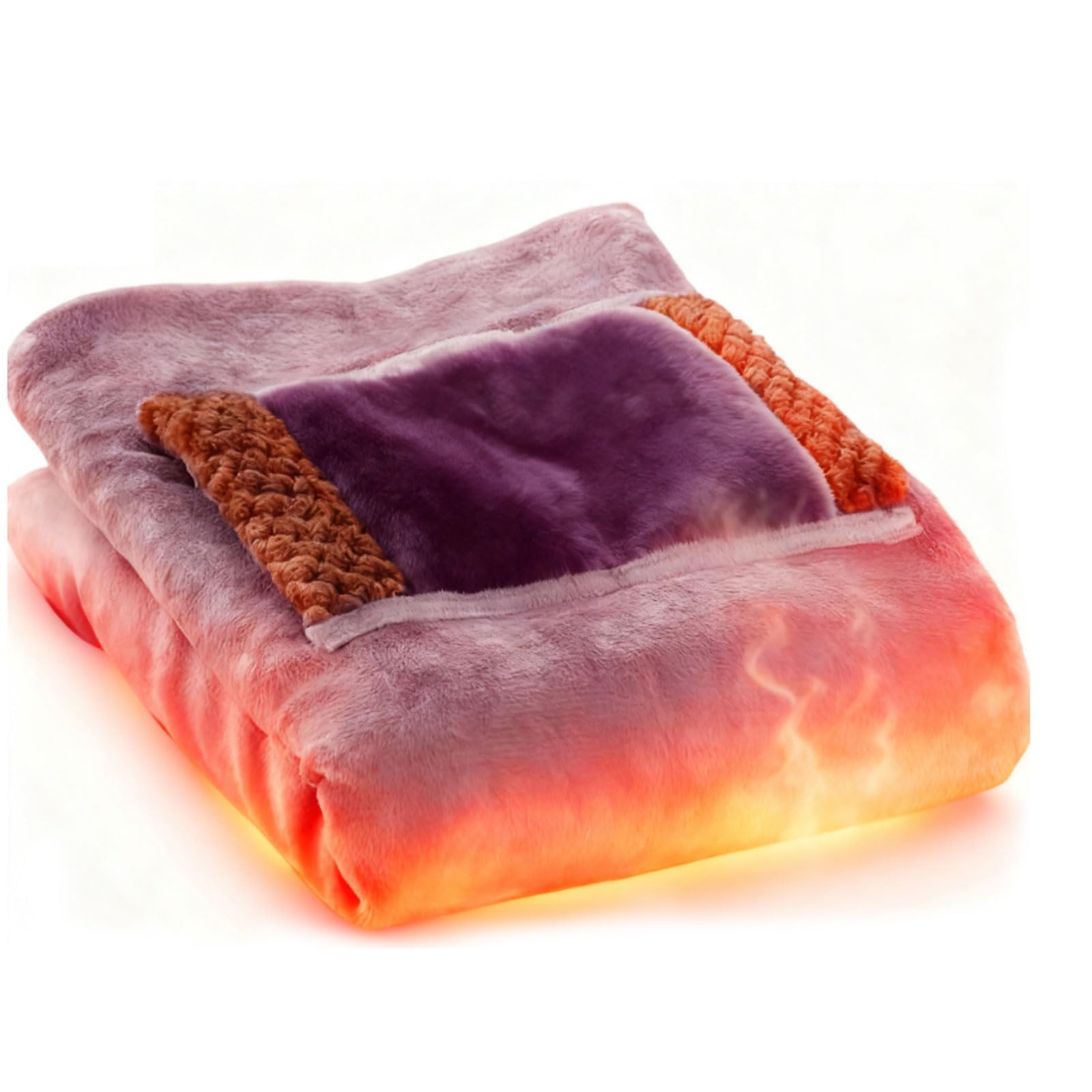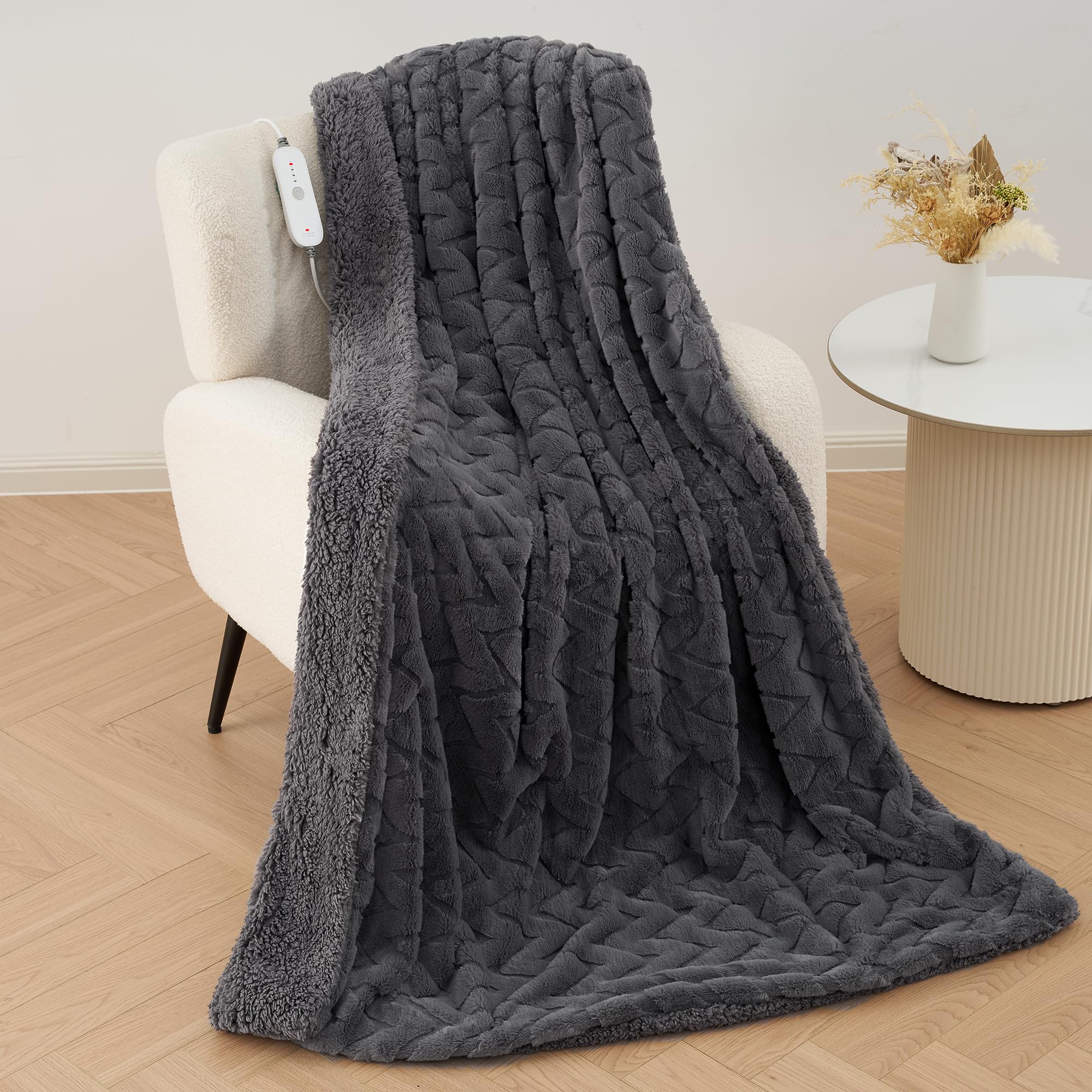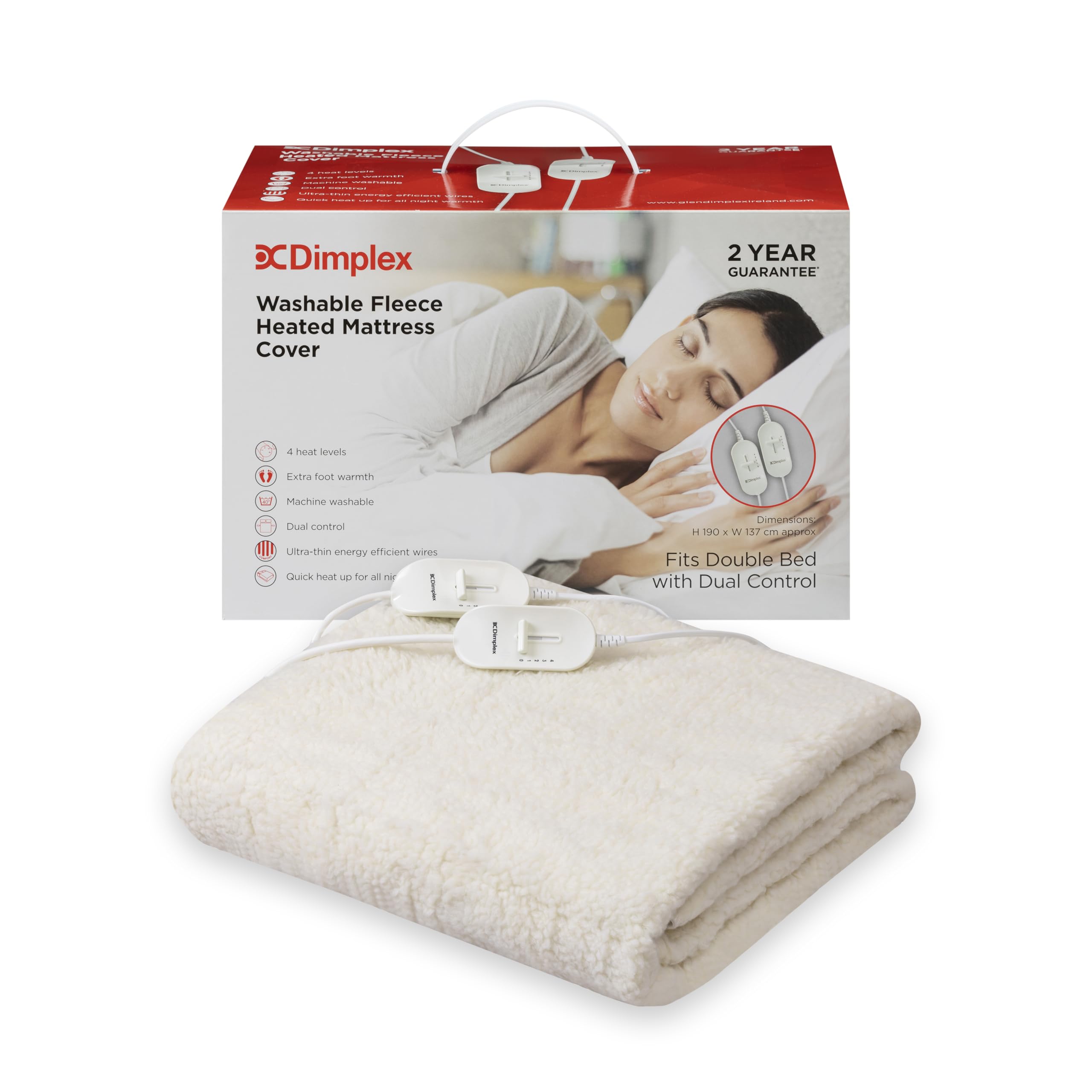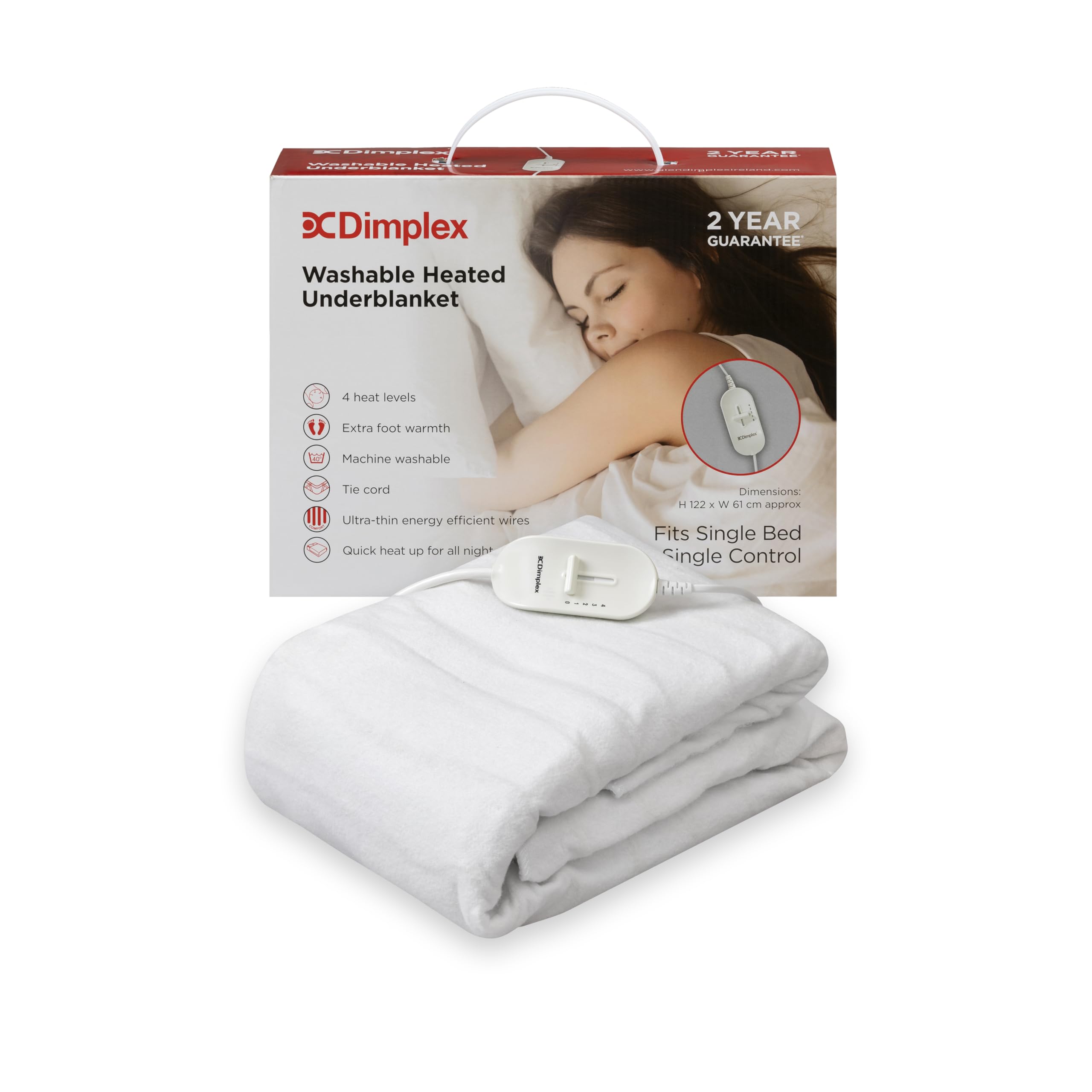Electric blankets can be an efficient way to stay warm on chilly UK evenings without running the boiler for hours. The key is understanding wattage, your tariff, and smart usage. This guide breaks down typical running costs for underblankets and heated throws, gives worked examples you can copy, and shares practical ways to stay cosy while keeping bills predictable.
Targeted bed warmth comes from electric blankets with clear timers.
Typical wattage for underblankets and heated throws
Most modern underblankets use around 40 to 120 watts on lower settings, with a short boost period at a higher draw when pre-heating. Heated throws usually sit between 80 and 150 watts, since they warm a larger exposed surface and lose heat faster in open air. Controllers often step power in small increments, so your average hourly draw can be lower than the peak rating you see on the label.
How to calculate cost with your tariff
You can estimate cost with a simple formula. Convert the blanket’s watts to kilowatts, multiply by hours used, then multiply by your electricity price per kilowatt-hour.
Cost = (Watts ÷ 1000) × Hours × Price per kWh
Example inputs you can swap with your own figures:
- Wattage: 60 W underblanket on a low setting
- Usage: 2 hours pre-bed, 1 hour on low while reading
- Tariff: 28 p per kWh
Cost = (60 ÷ 1000) × 3 × £0.28 = £0.0504. That is just over five pence for that evening’s use. A different setting or time will change the result, which is why it helps to note your own habits for a few nights.
Worked examples you can adapt
Underblanket, low setting for the evening
Assume 60 W average for 4 hours total. Cost = 0.06 kW × 4 × £0.28 = £0.0672. Around seven pence for the night.
Heated throw on the sofa
Assume 100 W for 3 hours watching TV. Cost = 0.1 kW × 3 × £0.28 = £0.084. Just over eight pence for the evening.
Pre-heating the bed then switching off
Assume 100 W for 30 minutes to warm sheets, then off. Cost = 0.1 kW × 0.5 × £0.28 = £0.014. About one and a half pence. This method is popular if you prefer sleeping without heat but dislike cold sheets.
Monthly estimates for planning
If you repeat a routine most nights, scale the nightly figure by the number of days. Using the underblanket example above at about seven pence per night, 30 nights would be roughly £2.02. If you use a higher setting or extend time, the cost increases proportionally. A quick note on your phone can help track your typical pattern, so you can plan the month with confidence.
Ways to keep costs low while staying warm
A blanket can be a very efficient layer, especially when targeted at the person who feels cold. To get more warmth per penny:
- Use a timed pre-heat. Warm the bed for 20 to 30 minutes, then turn it off or down once you are in.
- Layer smart. Pair a gentle setting with breathable sheets and a duvet suited to the season, rather than cranking the heat to compensate for heavy fabrics that trap moisture.
- Focus heat where you sit. A heated throw over your lap can reduce the need to heat the whole room for one or two people.
- Block draughts. A simple draught excluder and closed curtains can reduce background heat loss, so low settings feel warmer.
- Choose modern controllers. Newer models often modulate power smoothly, so average draw is lower than the peak figure.
Underblanket or heated throw: which is cheaper to run?
For bedtime use, an underblanket can feel warmer at a lower wattage because your duvet traps the heat around you. For evening TV, a heated throw is more practical and still inexpensive. The cheapest setup is the one that matches your routine. If you tend to read in bed, an underblanket on low makes sense. If you relax on the sofa, a heated throw targeted at your core is the more efficient choice.
Comfort, moisture, and fabric choices
Comfort is not only about heat output. Breathable layers help low settings feel warmer. Pair your blanket with cotton percale sheets if you run hot, or a slightly higher tog duvet for winter if you feel the cold. If your bed runs warm, consider lighter covers and a gentle pre-heat so you get into a warm bed then sleep at a comfortable temperature without the blanket running for hours.
Safety and timers
Modern electric blankets include safety features such as overheat protection and auto-off timers. Use the timer when you can. Keep the blanket flat, avoid creases, and follow the brand’s washing instructions if the model is removable. Inspect the cable and connector for wear at the start of the season. If you notice a hot spot, unusual smell, or visible damage, stop using it and replace it.
When central heating still makes sense
A blanket warms people directly, which is ideal for short evening use and for individual comfort. Central heating raises the whole room temperature and can be warranted for longer gatherings, very cold snaps, or when you need to control damp. Many UK households combine both: a short heating cycle to take the edge off the room, then a blanket for focused warmth while seated or in bed.
Models that use lower settings effectively, such as efficient electric underblankets, pair well with cosy heated throws for sofa evenings.
FAQs
How many watts does an electric blanket use on low?
Many underblankets average around 40 to 80 watts on a low setting once pre-heating finishes. The peak rating may be higher, but the controller cycles power, so the average draw can be lower than you expect.
Is a heated throw cheaper than turning on the radiator?
For one or two people, a heated throw can cost pennies per hour and feel warmer than a small rise in room temperature. For a group or a long evening, a short central heating cycle plus a throw can be a good balance.
Can I leave an electric blanket on all night?
Check your brand’s guidance. Many people use a timed pre-heat then switch off or set the lowest level for a short period. If you prefer to sleep without heat, pre-warming for 20 to 30 minutes often feels best.
Will a blanket add much to my bill?
Used for a few hours on low, the cost is usually a few pence per night. Your tariff and settings matter most. Run the quick calculation with your own figures to get an accurate estimate.





